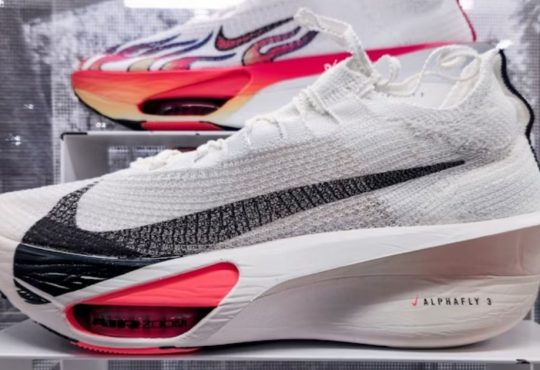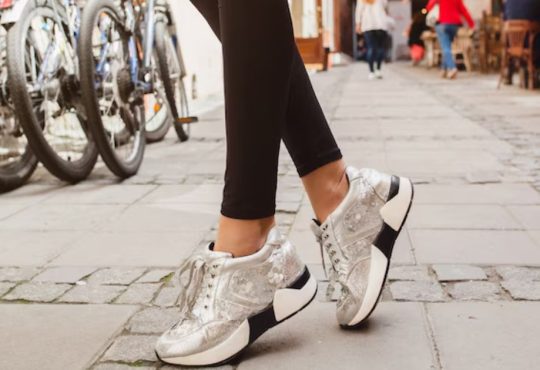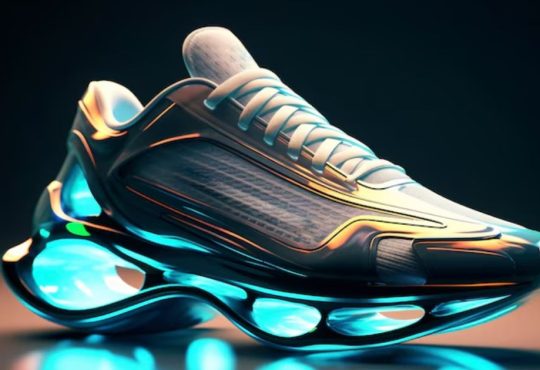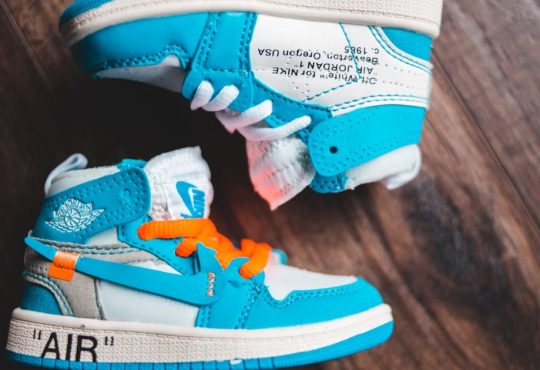Shoes do more than protect your feet—they’re a statement of style, a source of comfort, and often an investment worth maintaining. Whether it’s polished dress shoes, your go-to sneakers, or rugged hiking boots, every pair deserves a little attention. That’s where smart shoe care hacks come in. Keeping your footwear clean and well-maintained not only boosts its look but also extends its lifespan, saving you money and cutting down on waste.
This guide walks you through essential shoe care hacks, from simple cleaning tips and conditioning tricks to clever storage solutions and knowing when it’s time for repairs. With just a few easy habits, you can keep your shoes looking sharp and feeling comfortable, because every great outfit starts from the ground up.
Why Proper Shoe Care Matters
Proper shoe care significantly extends the lifespan of footwear, often doubling or even tripling the time shoes remain wearable. Clean and polished shoes maintain a sharp appearance, enhancing any outfit and boosting overall confidence. Well-maintained shoes preserve their shape, cushioning, and support, ensuring lasting comfort. Investing in high-quality shoes is protected through regular maintenance, safeguarding their value over time. Additionally, proper care reduces environmental waste by decreasing the need for frequent replacements, making footwear choices more sustainable.
With these benefits in mind, it’s time to explore the practical steps for keeping shoes in top condition.
Understanding Shoe Materials
Different shoe materials require different care. Understanding the material is key to proper care and maintenance.
Leather
Leather, the most common premium shoe material, appears in several distinct forms:
- Full-grain leather: The highest quality, tough, and durable with natural texture.
- Top-grain leather: Slightly sanded for a smoother surface.
- Patent leather: Highly polished, glossy finish.
- Suede and nubuck: Soft, textured leathers known for their delicate, fuzzy surfaces that add a luxurious touch but require gentle care.
Fabric and Canvas
Fabric shoes, often found in sneakers and casual styles, are lightweight and breathable but tend to be more prone to stains and dirt, requiring careful cleaning to maintain their look.
- Synthetic Materials: Widely used in the production of sneakers and waterproof boots, these materials include faux leather, mesh, and rubber.
- Rubber and Plastic: Primarily found in soles and waterproof shoes, these materials require distinct cleaning methods.
Daily Shoe Care Hacks Routine
Great shoe maintenance starts with small, consistent habits.
1. Clean After Every Wear
- Gently, remove dirt and dust with a soft brush or a damp cloth.
- For sneakers, wipe off surface dirt as soon as possible.
- Don’t let mud or grime dry on your shoes, as it can damage the material.
2. Air Them Out
- Shoes absorb moisture from sweat and the environment.
- Letting shoes dry naturally in a well-ventilated area helps prevent moisture buildup, odors, and material damage.
- Avoid direct sunlight or heat sources, as they can cause materials to warp and dry out.
3. Use Shoe Trees
- Insert cedar or wooden shoe trees when shoes are off.
- Shoe trees help preserve footwear by absorbing excess moisture, retaining the shoe’s original shape, and minimizing the formation of creases over time.
- Avoid plastic trees, which don’t absorb moisture.
Cleaning Techniques by Shoe Material
Leather Shoes
- Gently lift dirt using a suede brush.
- Use saddle soap or specialized leather cleaner: Apply sparingly with a damp cloth, working in circular motions.
- Wipe off the excess cleaner and let it dry naturally.
Suede and Nubuck
- Gently lift dirt from the suede with a soft suede brush, restoring that plush texture without damaging the delicate surface.
- For stains on suede, use a suede eraser to gently rub the affected area, or apply a diluted white vinegar solution with a soft cloth—dab lightly without soaking the material.
- Avoid water—suede hates moisture.
Fabric and Canvas
- Hand wash with mild soap and water.
- Gently scrub stains on sneakers using a soft-bristled brush to lift dirt without damaging the material.
- Some fabric shoes can be machine-washed on a gentle cycle inside a laundry bag, but check the manufacturer’s instructions.
Synthetic Shoes
- Wipe away surface dirt using a damp cloth paired with a mild detergent, taking care not to oversaturate the material.
- Avoid harsh chemicals that may degrade materials.
Conditioning and Polishing Leather Shoes
Leather needs to stay supple to prevent cracking and maintain shine.
Step 1: Clean
Always clean before conditioning.
Step 2: Condition
- Use a quality leather conditioner or cream.
- Apply thinly and evenly with a soft cloth.
- Let the conditioner absorb for 10-20 minutes.
Step 3: Polish
- Select a shoe polish that matches the shoe color, or opt for a neutral shade to maintain versatility.
- Apply in small amounts using a soft applicator.
- Buff shoes using a horsehair brush or a microfiber cloth to bring out a smooth, polished shine.
Step 4: Protect
- Use a water-repellent spray for added protection against moisture.
- Spray a light, even coat over the entire surface, then let the shoe air dry completely for the best protection and finish.
Dealing with Scuffs, Scratches, and Stains
- Minor scuffs on leather: Use a matching shoe polish or leather balm to blend marks.
- Deeper scratches: A leather filler or professional repair may be necessary.
- Scuffs on patent leather: Wipe with a damp cloth and use a patent leather cleaner or petroleum jelly for shine.
- To treat stains on suede, lightly rub the area with a suede eraser. If the mark remains, it’s best to take the shoes to a professional cleaner to prevent further damage.
Protecting Shoes from Water Damage
Water is one of the biggest enemies of many shoe materials.
- Apply water-repellent sprays: Use sprays designed for your specific shoe material regularly.
- Avoid puddles and wet grass: If shoes get soaked, stuff them with newspaper to absorb moisture and let them air dry naturally, keeping them away from direct heat sources.
- Consider waterproof boots for rainy climates: Some shoes are specially designed to repel water without sacrificing breathability.
Storage Tips for Longevity
How you store shoes can be as important as how you clean them.
Avoid Sunlight and Heat
Prolonged sunlight exposure can fade colors and dry out materials, weakening both the look and durability of footwear.
Use Proper Shoe Boxes or Dust Bags
If you’re storing shoes for an extended period, use breathable bags or boxes to protect them from dust and moisture.
Keep Shape Intact
Shoe trees or acid-free paper help maintain shape and prevent creasing when shoes aren’t being worn.
Don’t Pile Shoes
Stacking can deform shapes and damage materials.
Repair and Resoling
Even the best care can’t prevent wear forever. Knowing when to repair can save money and extend the life of your shoes.
- Worn soles: Get them resoled by a skilled cobbler.
- Loose stitching or a torn lining: Repair it early before the damage worsens.
- Damaged heels: Expert repair services can restore or replace worn or broken heels, extending the life of the shoes.
- Broken laces: Replace regularly to avoid breakage at inconvenient times.
Regular visits to a trusted cobbler can keep your shoes in top form for years.
Special Tips for Sneaker Care
Sneakers often combine different materials, so they need extra attention.
- Remove laces and insoles before cleaning.
- Use sneaker-specific cleaning kits for best results.
- Avoid using bleach or harsh detergents, as they can cause discoloration.
- Air dry only — never use a dryer.
- Rotate your sneaker collection to reduce wear.
Eco-Friendly Shoe Care Practices
As sustainability becomes increasingly crucial, shoe care can also be environmentally friendly.
- Choose natural cleaning products, such as saddle soap made with plant-based ingredients.
- Use beeswax polish instead of synthetic options.
- Repair instead of replacing shoes whenever possible.
- Recycle old shoes through programs like Nike’s Reuse-A-Shoe.
- Support brands that prioritize eco-friendly materials in both shoes and care products.
Common Shoe Care Mistakes to Avoid (Expanded Edition)
Using too much water on leather or suede
Water can be surprisingly harmful to delicate materials like leather and suede. Excessive moisture may cause staining, warping, or even lead to mold and mildew. For suede, water can flatten the nap and leave discolored spots, while leather may become stiff or crack over time. Use damp (not wet) cloths and specialized cleaning products designed for these materials to prevent permanent damage.
Applying polish or conditioner to dirty shoes
Treating shoes with polish or conditioner without cleaning them first can seal in dirt, grime, or even salt stains. This not only dulls the finish but can also break down the material over time. Always give shoes a gentle brush or wipe-down before applying any products. Clean shoes provide a fresh surface for conditioners or polish to penetrate properly and work their magic.
Drying shoes near heaters or in direct sunlight
It’s tempting to speed up the drying process after a rainy day, but placing wet shoes next to a heat source or in direct sunlight can cause them to warp, crack, or shrink. Heat draws moisture out too quickly, damaging the shoe’s natural fibers. Instead, let shoes dry slowly at room temperature with paper stuffing inside to help maintain their shape.
Wearing the same pair every day without giving them a rest
Shoes need time to air out and recover their shape, especially leather and suede styles that absorb moisture from your feet. Wearing them back-to-back can lead to faster wear and more odor buildup. Rotating between at least two pairs of shoes extends their lifespan and keeps them feeling fresher and longer.
Ignoring minor repairs until they get worse
A loose sole, a worn-down heel, or a small tear might not seem urgent, but ignoring them can lead to major (and more expensive) damage. Regularly inspect shoes for signs of wear and take them in for basic repairs as needed. Catching issues early can extend the life of your footwear and keep it looking great for years to come.
Where the Sole Meets the Story
Shoe care is an art that pays dividends in comfort, style, and longevity. With a bit of knowledge and consistent effort, you can keep your footwear looking sharp for years to come. From classic leather dress shoes to everyday sneakers, the right cleaning, conditioning, storage, and repair habits will preserve their beauty and function.
Remember, shoes often tell your story—make sure yours are well-kept chapters worth showing off. So, next time you kick off your shoes, don’t just toss them aside. Give them a little love, and they’ll take you places.





